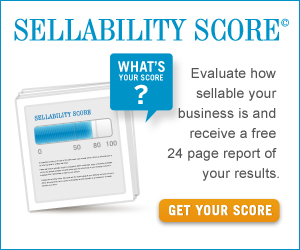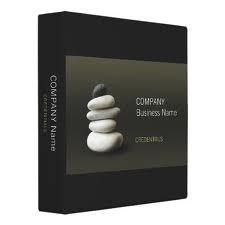Republished with permission from Built to Sell Inc.
You may be eager to sell your business, and happy to have an acquirer at your doorstep, but what’s it like when an acquirer starts looking inside every corner of your business?

Most professional acquirers will have a checklist of questions – both objective and subjective – that they need answered before getting serious about buying your company.
Examples of objective questions include:
- When does your lease expire and what are the terms?
- Do you have consistent, signed, up-to-date contracts with your customers and employees?
- Are your ideas, products and processes protected by patent or trademark?
- What kind of technology do you use, and are your software licenses up to date?
- What are the loan covenants on your credit agreements?
- How are your receivables? Do you have any late payers or deadbeat customers?
- Does your business require a license to operate, and if so, is your paperwork in order?
- Do you have any litigation pending?
Then they’ll try to get a subjective sense of your business, including figuring out just how integral you are personally to the success of your business. And that requires some investigative work as well as some tricks of the trade. For example:
Trick #1: Making last-minute changes
By asking to make a last-minute change to your meeting time, an acquirer gets clues as to how involved you are personally in serving customers. If you can’t accommodate the change request, the acquirer may probe to find out why and try to determine what part of the business is so dependent on you that you have to be there.
Trick #2: Checking to see if your business is vision impaired
An acquirer may ask you to explain your vision for the business, which is a question you should be well prepared to answer. However, he or she may ask the same question of your employees and key managers. If your staff members offer inconsistent answers, the acquirer may take it as a sign that the future of the business is in your head.
Trick #3: Asking your customers why they do business with you
A potential acquirer may ask to talk to some of your customers. He or she will expect you to select your most passionate and loyal customers and will therefore expect to hear good things. The customers may be asked a question like “Why do you do business with these guys?” The acquirer is trying to figure out where your customers’ loyalties lie. If your customers answer by describing the benefits of your product, service or company in general, that’s good. If they respond by explaining how much they like you personally, that’s bad.
Trick #4: Mystery shopping
Acquirers often conduct their first bit of research before you even know they are interested in buying your business. They may pose as a customer, visit your website, or come into your company to understand what it feels like to be one of your customers.
Make sure the experience your company offers a stranger is tight and consistent, and try to avoid being personally involved in finding or serving brand new customers. If a potential acquirer sees you personally as the key to wooing new customers, they’ll be concerned that business will dry up when you leave.
You may not be expecting an acquirer any time soon, but it’s never too early to ask yourself the questions an acquirer would be asking you – and your employees and customers – if he or she was thinking of buying your business.
Why not find out now if your business is sellable?
This free online tool is the only no-risk step you can take to determine if your business is ready to get full value. Fast-track your analysis by taking advantage of this free, no-obligation free online tool.
This Sellability Score you instantly receive is a critical component to any business owner’s complete financial plan and is something that, until now, we have only made available to existing clients.
However, we recognized that there is value in knowing in advance of working with a financial planner whether or not your largest asset is ready to be exchanged for your retirement nest egg. Our view is that you are better to learn more about your businesses sellability today and find out how your business scores on the eight key attributes so that you can ensure you obtain full value.
If your business part of your retirement plan, finding out your sellability score will be the best 10 min. you could ever spend working “on” your business.
Take the Quiz here: The Business Sellability Audit
 For more free information on Creating A Business Owner’s Dream Financial Plan, you can listen to a free, eight part series we did exclusively for business owners. The show is also available to subscribe to for free via iTunes.
For more free information on Creating A Business Owner’s Dream Financial Plan, you can listen to a free, eight part series we did exclusively for business owners. The show is also available to subscribe to for free via iTunes.




 5. Who buys what you sell?
5. Who buys what you sell? In this video, I speak to Jennifer Jacobs, President of LTCI Consulting Inc. to chat about the expectation of changes of living benefits / life insurance, in terms of what we see in the market place and what we can do to take advantage on what is available today.
In this video, I speak to Jennifer Jacobs, President of LTCI Consulting Inc. to chat about the expectation of changes of living benefits / life insurance, in terms of what we see in the market place and what we can do to take advantage on what is available today. You may be years away from selling your business, but it’s never too early to understand what the process involves.
You may be years away from selling your business, but it’s never too early to understand what the process involves. 2. Nurture and prepare a group of 10 to 15 “reference-able” customers.
2. Nurture and prepare a group of 10 to 15 “reference-able” customers. Like many Canadians approaching retirement, you probably have an RRSP that you have been contributing to and managing for years. However, that magical date where you turn 71 and have to convert your RRSP to a RRIF is quickly approaching. Now you need to know more about Registered Retirement
Like many Canadians approaching retirement, you probably have an RRSP that you have been contributing to and managing for years. However, that magical date where you turn 71 and have to convert your RRSP to a RRIF is quickly approaching. Now you need to know more about Registered Retirement  3. What are the best investment practices to investing your RRIF?
3. What are the best investment practices to investing your RRIF? 4. How should you schedule your RRIF withdrawal?
4. How should you schedule your RRIF withdrawal? 5. RRIF Beneficiaries and Taxes.
5. RRIF Beneficiaries and Taxes. Does Your Business Have Curb Appeal?
Does Your Business Have Curb Appeal? Perhaps, like many other business owners, you started your business from scratch with one or two employees and now you have 20 people working for you. But do you have the appropriate HR infrastructure in place for that size of a company? Perhaps you even take pride in your informal management style, but it can prove to be a liability when it comes time to sell.
Perhaps, like many other business owners, you started your business from scratch with one or two employees and now you have 20 people working for you. But do you have the appropriate HR infrastructure in place for that size of a company? Perhaps you even take pride in your informal management style, but it can prove to be a liability when it comes time to sell. When you go to buy a house, it will give you confidence if the owner has the instruction manuals for the appliances, information on where they were purchased, and who to call if one of them breaks down.
When you go to buy a house, it will give you confidence if the owner has the instruction manuals for the appliances, information on where they were purchased, and who to call if one of them breaks down. Intangibles for house buying might include:
Intangibles for house buying might include: Is Now the Time To Sell Your Business?
Is Now the Time To Sell Your Business?




